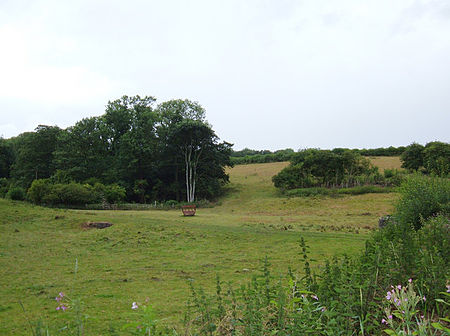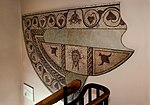Wothersome

Wothersome is a civil parish in the City of Leeds metropolitan borough, West Yorkshire, England. It is south of Wetherby, north east of Leeds and west of Bramham. It has a population of 40. From the 2011 Census the village is shown as being in the Harewood ward of Leeds Metropolitan Council. In 1848 it was described as having 3 farms totalling 600 acres (2.4 km2) and a population of 19 people. It was a township in Bardsey parish in the Skyrack wapentake, lower division, in the West Riding of Yorkshire.In 1871 the population of Wothersome was 24; in 1901 it was 28; it 1971 it was 26.In 1418, the medieval spelling, or, at least, the pronunciation, may have been Wodusom.
Excerpt from the Wikipedia article Wothersome (License: CC BY-SA 3.0, Authors, Images).Wothersome
Thorner Lane, Leeds Wothersome
Geographical coordinates (GPS) Address Nearby Places Show on map
Geographical coordinates (GPS)
| Latitude | Longitude |
|---|---|
| N 53.8775 ° | E -1.395 ° |
Address
Thorner Lane
LS23 6LY Leeds, Wothersome
England, United Kingdom
Open on Google Maps









